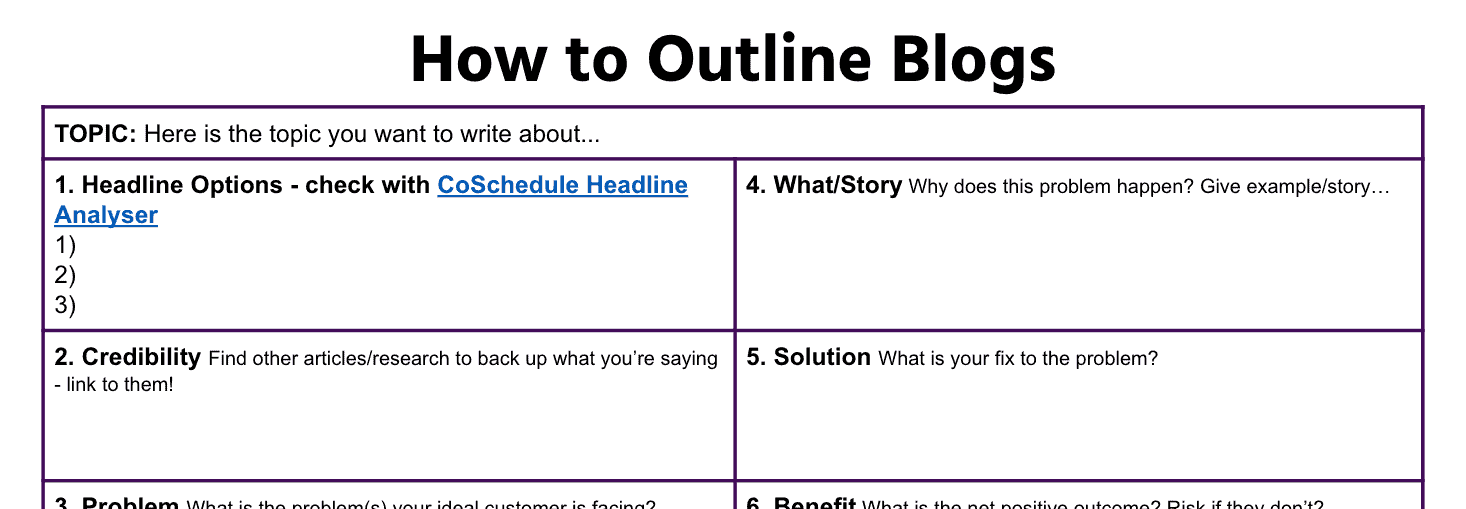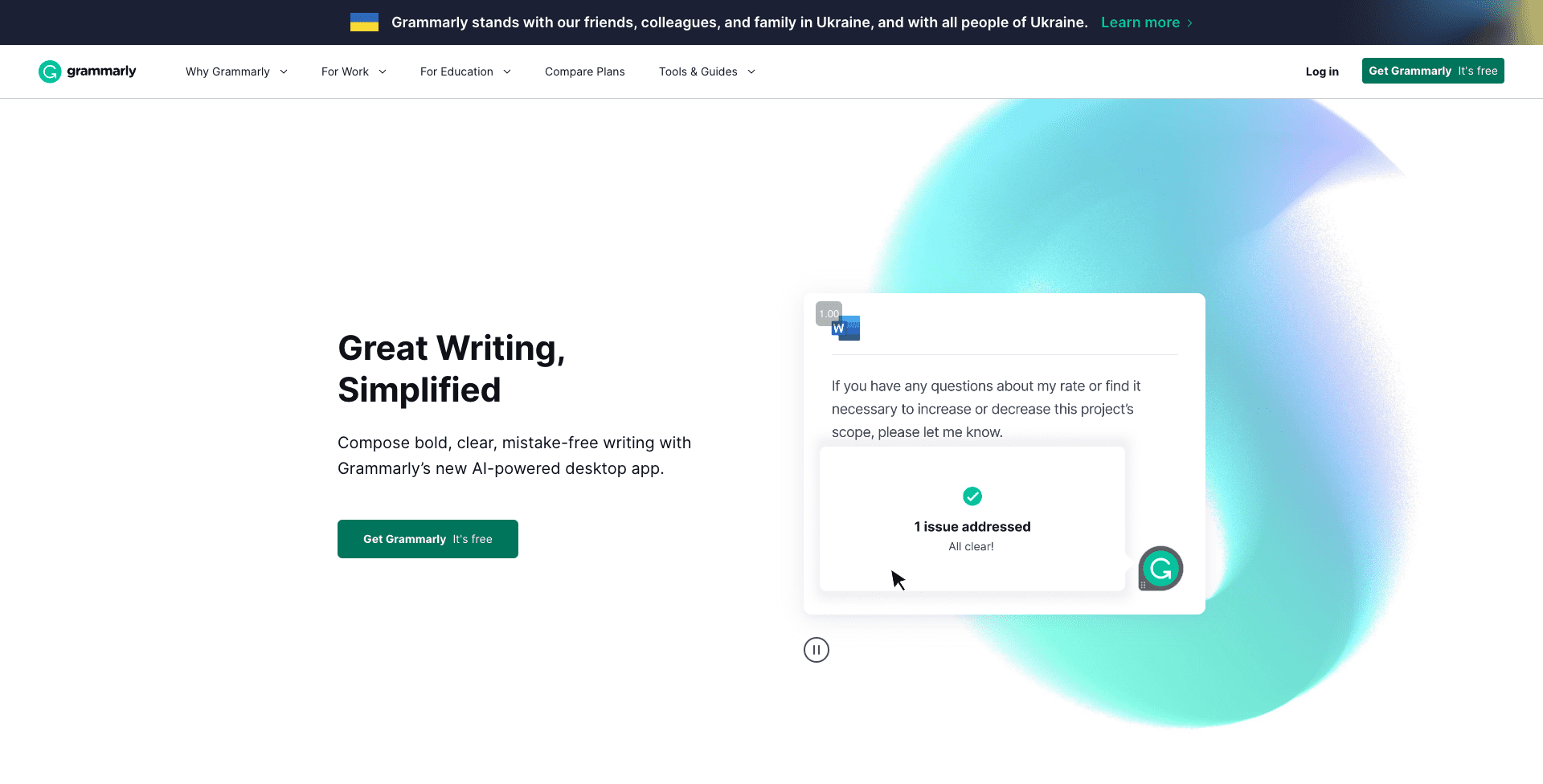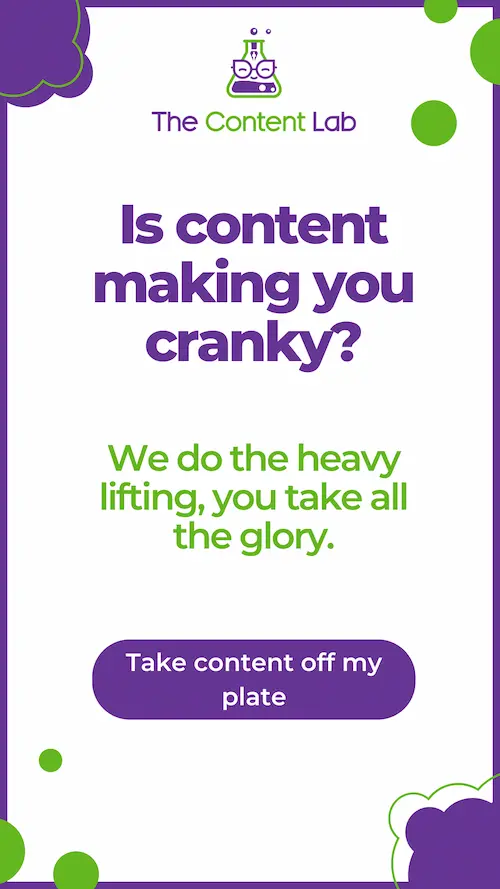Unless you’re living under a rock right now, AI writing and Chat GPT are all anyone in our industry is chatting about. And I can see why. The possibilities are endless, and for those in the web design world who aren’t natural writers (or just hate the process of writing for hours on end), getting an AI to do the heavy lifting is *tempting*.
So, to help those of you struggling to write a blog post that ranks on Google, I’m going to share some of my tips and techniques of the trade to make sure that your next blog post (whether lovingly handcrafted or AI-based) is built to convert (and rank on Google).
I’ve been writing for the web for over ten years, and between me and my team of talented copywriters and content writers, we currently serve over 40 agencies with their (and their clients’) monthly blogging needs. In doing so, we’ve gained a whole load of knowledge on content marketing and how to do it right.
With the influx of AI-created content that’s incoming, I want to share this knowledge with you so you can write better content that represents your great work, outranks low-quality blogs, and gives your audience a better experience online.
Blogging: a recap on why we do it (AKA blogging: a gentle reminder that quality over quantity is EVERYTHING)
As you, my dear reader, are most likely a web design professional, I’m probably already preaching to the choir (hopefully!), but a gentle reminder and refresh on what blogging is designed to do doesn’t hurt anyone.
Good reasons to blog:
- Sharing your expertise and insider knowledge with potential clients
- Building authority in your space
- Adding fresh, helpful content to your website (Hello Google)
- Improving your rank for keywords/key phrases
- Building a solid foundation of great content to share with your leads
- You love writing blogs
Not good reasons to blog:
- Filling up your website with content, ANY content
- Everyone else is writing on this one topic, so you must too
- Chat GPT/Jasper/*insert random AI content generator here* can spew out 500 words in 5 seconds, so let’s just publish that
If you haven’t *quite* twigged it yet, one of the main points of this post is to really drive home the fact you deserve high quality blogs that represent your business. There isn’t anything wrong with using AI to generate those blogs – but for the love of all things content, if you’re using an AI generator for your blogs, EDIT THEM BEFORE PUBLISHING.
With so much crappy content floating around, people take notice when a company puts in a little effort. Writing about your unique insights, in your unique brand voice makes you stand out. It differentiates you from the competition.
If you have great content, you stand out online, and your people can find you.
This leads to, well this leads to leads. Which leads to paying clients.
Authentic content creates authentic relationships.
So, with that all in mind – let’s get into the nitty gritty details of HOW to write a great blog post.
How to research blog posts
Before you can start writing that blog post, you have to come up with a topic first. If you’re new to the world of blogging, you have a completely blank slate to work from. If you’re already a pro with a healthy backlog to add to, your approach to new titles is going to be a little different.
If you’re new to blogging, here a few things to explore:
- What do you want to talk about?
- What questions do you get asked a lot?
- Do you have a unique insight to share with your readers?
- What problems are your audience looking for answers to?
- Check your analytics – are people landing on your website based on keywords that can be explored in blogs?
If you’ve already got quite a few blogs published, consider creating content around:
- Topics you’re passionate about that clients regularly ask you about
- More in-depth pieces on short blogs that have performed well in the past (or even better, revisit your best-performing posts and expand on them)
- New innovations/techniques in your clients’ industry
Other options if you’re a bit stumped include:
- Checking out what others in your industry are writing about
- Browsing online forums where your clients hang out (What are they asking? What answers get great feedback?)
- Take notes on your next sales call: is there anything you can write about that will make your next sales call easier? Can you create a resource to send leads to that will answer their questions and increase your level of trust with them?
Now you have an idea of what you want to write about, let’s get onto the next part.
For the next few steps of writing an amazing blog post that your target audience will love, your competitors will envy, and Google will push all the way to the top of its search results, I’ve created a freebie. This free blog template will help you plot out what you’re going to write about, keep it reader-focused, and increase the chances of a conversion at the end of it.

*Make a copy of this free template now* and let’s dive into what to do next.
How to create a blog title
So you’ve got your template open, and you know what topic you’re going to target: it’s time to develop an unforgettable blog title.
Good blog titles:
- Address your reader’s problem
- Are specific, not generic
- Give insight into what to expect from the blog
- Use powerful, emotive language
You can use CoSchedule Headline Analyser to create the best title possible. It analyzes how good your headline is and tells you how likely the title will get the attention you want.
Ok, let’s write!
After you’ve finished your title, it’s time to do in-depth research into similar topics. Credibility is important, so when you’re doing your research, be sure to find some articles that back up what you’re saying. For example, you can look at industry podcasts, authority figures within your niche, or studies/news items. Do not use Wikipedia!
Set the scene by outlining what your reader is facing right now. I’m not a fan of wallowing in misery or making a simple problem sound like the end of the world, so a couple of sentences that shows you understand and have empathy for their situation is more than enough.
Next, outline how they can overcome the issue they’re facing. Depending on your audience will dictate exactly what level of ‘jargon’ you can go into. Use the language and terminology your reader will understand. I use the free tool Hemingway App to make sure my stuff isn’t too hard to understand for the average reader.
Finally, you have to show your audience that you have the solution and can help them. Show them the benefits of working with you.
Don’t hit them with a sales pitch; instead, demonstrate that you’re knowledgeable enough to assist them overcome their problems.
They’re struggling. You’re here to help. You just have to show them that you can help without being too sales-y.
A key part of any blog summary is a great call to action. What do you want them to do? Download a lead magnet? Schedule a call? Fill in a questionnaire? What’s the next step to solving their problem?
First draft, done
With a clear outline, you can expand on each section – whether that’s tapping away on your keyboard or feeding the prompts into an AI generator. Once completed, run through Hemingway App and a spellchecker, like Grammarly.

As I write this in 2023, we optimize all of our blogs (and our clients’ blogs) with Surfer SEO. It’s a great tool that gives you recommendations on blog length, keyword placement, and a bunch of other SEO essentials based on the highest-ranking blogs for your chosen keyword.
I know these few paragraphs make blogging sound super easy and quick, but it’s not. We both know blogging can be difficult and time-consuming. Hopefully with this easy-to-follow blogging process, it’ll help reduce some of the pain of regularly publishing great content for your business.
Now you know how to blog, let’s take a look at best practices for blogging.
The 5 golden rules for blogging (and getting those blogs published)
To make the most out of your blogging efforts, I’m going to share five content principles every single successful agency follows to make their content marketing efforts go well.
1. Done is better than perfect
Have you got 20-something drafted blog posts hiding away in the backend of your website? Maybe you have a list of amazing blog titles you came up with from 2012 in a Google doc you gaze at longingly every so often?
You’re not alone. Perfectionism is holding you back!
Content is never done, trust us. There’s always something that can be improved. But the great thing about publishing content on your website is you can continuously improve, update, and enhance it.
Having a blog on your website that attracts and converts new clients is better than having an unfinished piece in Google Docs that’s been sitting for months doing nothing for you.
So get it done, get it written, and upload it to your website. You can go back to it later and update it or add to it.
2. Create a repeatable process that suits you
Having a process that helps you write content makes it easier to bust out a variety of blogs for your website, and it helps your team write blogs for you too.
A simple, easy-to-understand process that works for you is the way to go. Everyone works differently, so sit down and figure out what process works for you so you can start completing great content that promotes your company..
3. Don’t do it alone
Whether you have a team, a freelancer, an agency, or a writing tool, don’t do content all by yourself. Get the support you need to continue writing great content for your audience.
You have limited time, don’t waste it trying to do everything yourself!
4. Schedule it out
Scheduling is so important. A consistent upload schedule not only looks professional but will also demonstrate to Google that you’re a company that’s ahead of the content game.
By bulk-producing content, you’ll be able to schedule your blogs in advance. Now, you don’t have to do a whole year at a time (unless you want to) but try to write a quarter’s worth of content and load it up on your CMS and social media ahead of time.
5. Reuse, repurpose, recycle
Talking of social media, you want to be making the most of all your hard work by promoting those blog posts everywhere.
A great blog post can become an email series or several social media posts. All you have to do is rewrite some of the content for an email or repost sections of it for social media.
Get the most out of your blog – you’ve put in enough effort!
The secret to blogging success? Scheduling
Struggle to come up with ideas? Can’t remember the last time you published? Creating a schedule or content calendar helps you stay on top of things.
Oh, and what’s this? Why it’s another FREEBIE. Here’s a content calendar.
Your blog schedule can include:
- Blog titles
- Including H1s and H2s!
- Information you’ve researched, or you’ve received from a client
- Due dates
- Start dates
- Drafts due
- Publish date
- Secondary content – do you need to write social posts or emails?
- Links you want to include
- What the CTA should be
- Scheduling will help streamline your content and make your life a whole lot easier
You don’t have to schedule a whole year in advance but try to plan at least a quarter in advance. Try to plan for at least one blog a month, but if you can, a blog a week is a great place to be at!
In summary – I hope this helped! (Get writing)
I hope this intro guide to writing a blog has helped simplify and demystify some of the blogging process. Blogging can take a lot of planning and research, but it’s worth it once you’ve got your content published and you start hearing: ‘Hey so I read your great blog on *** and wanted to reach out to hire you to help me do exactly that.’
Go on, get those blogs published!






